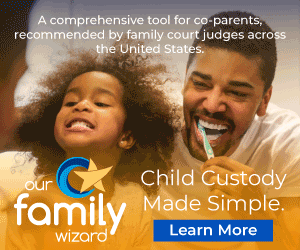US Baby Care Products Contain Carcinogens
Written by: Alison Print This Article
Print This Article
Use of Our Content (Reposting and Quoting)
American baby care products are not as safe as consumers may expect. The Campaign for Safe Cosmetics released a report on 48 baby care products that were tested for the carcinogens formaldehyde and 1,4-dioxane. The March 2009 report, entitled “No More Toxic Tub”, reveals that 67 percent of the products tested contained detectable levels of 1,4-dioxane. 82 percent of the products tested contained detectable levels of formaldehyde and 1,4-dioxane. And 61 percent of products tested contained both.
Of the 48 products tested, only 28 were tested for formaldehyde. So there’s a chance that if all products had been tested for both, the percentage of products contaminated with both could be higher than 61 percent.
The State of California classifies both chemicals as carcinogens under its Proposition 65 “The Safe Drinking Water and Toxic Enforcement Act of 1986” passed in 1986. Both were listed as carcinogens on January 1, 1988. The US EPA regards both as probable carcinogens.
None of the tested products listed either chemical on their labels. That’s because they are manufacturing process contaminants, not ingredients.
The products found to contain both contaminants includes popular big-brand items used widely such as Johnson’s Baby Shampoo, Sesame Street Bubble Bath, Grins & Giggles Milk & Honey Baby Wash, and Huggies Naturally Refreshing Cucumber & Green Tea Baby Wash. Baby Magic Baby Lotion contained the highest levels of formaldehyde, enough that it would require warning labels in Europe. American Girl shower products contained the highest levels of 1,4-dioxane.
The full list of products found to contain both contaminants is:
- American Girl Real Beauty Inside and Out
- Shower Gel – Apple Blossom (three samples)
- Baby Magic “Soft Baby Scent” Baby Lotion
- Barbie Berry Sweet Bubble Bath
- CVS Baby Shampoo
- CVS Kids Body Wash – Blueberry Blast
- Dora the Explorer Bubble Bath
- Equate Tearless Baby Wash
- Grins & Giggles Milk & Honey Baby Wash
- Hot Wheels Berry Blast Bubble Bath
- Huggies Naturally Refreshing Cucumber & Green Tea Baby Wash
- Johnson’s Baby Shampoo
- L’Oreal Kids Extra Gentle 2-in-1 Fast Dry Shampoo – Burst of Cool Melon
- Pampers Kandoo Foaming Handsoap – Magic Melon
- Sesame Street Bubble Bath – Orange Mango Tango
- Tinker Bell Scented Bubble Bath
Other nations ban these chemicals from personal care products. Japan and Sweden prohibit formaldehyde in such products. The European Union prohibits the presence of 1,4-dioxane in personal care products at any level. The US government, however, doesn’t ban these chemicals from being used in personal care products even though they are probable carcinogens, they are not necessary in the products, and their presence could be eliminated at reasonable cost.
By examining ingredients of personal care products, you may be able to discern products that are likely to be contaminated. Common ingredients that often introduce 1,4-dioxane contamination include Peg-100 stearate, Sodium laureth sulfate, Polyethylene, and Ceteareth-20. Common ingredients that often introduce formaldehyde contamination include Quaternium-15, DMDM hydantoin, Imidazolidinyl urea, Diazolidinyl urea, Sodium Hydroxymethylglycinate.
Buying personal care products is complicated by the failure to get contaminants out of the products. Even the packaging can be a problem. Many product containers are made of PVC plastic #3. This plastic can leach phthalates, plastic softeners which are also often used in fragrance ingredients, into the contents of the package. You can help reduce the risk to your children by checking packages to see that the container is not made of of PVC plastic #3 by looking for the recycling symbol on the container.
Phthalates are believed to damage the reproductive organs in humans. The Consumer Product Safety Improvement Act of 2008 prohibits the sale of toys for children age 12 and under if they contain more than 0.1% phthalates.
Personal care products in the US fall under FDA regulation via the Federal Food, Drug, and Cosmetic Act. Although the European Union has banned more than 1100 chemicals from cosmetics because they are known or probable health risks, the US has only banned 11 of those chemicals.
It’s not clear how to realistically avoid buying personal care products containing known toxic chemicals. As many of them are contaminants, they are not listed on labels. Even the containers are potentially dangerous, as mentioned. And due to lax product safety laws, the government doesn’t test or enforce limits for most unsafe chemicals. One possible answer is to avoid buying American products. Instead, buy personal care products made in countries with better product safety laws such as Europe and Japan.
You might also try looking up product test data via the Environmental Working Group’s Cosmetic Safety Database. The database contains testing data on thousands of products. Each product is rated from 0 to 10 based upon the levels of hazardous chemical present in it. The details on the products also include ingredients and likely hazard levels from each ingredient. In a brief look through the site, we found many baby products from lesser-known manufacturers using plant-based oils and similar “natural” ingredients that were rated from 0 to 2 which on this site means they are low hazards. They also have much other information, even ratings on sunscreen UVA and UVB light blocking strength. If you’re concerned about the health impact of products you use for yourself and your family, this website is definitely worth a look.
Further Reading
Environmental Working Group’s Cosmetic Safety Database
New Report: No More Toxic Tub — Getting Contaminants Out of Children’s Bath & Personal Care Products
Carcinogens found in some baby products, says report (news video)
US study finds carcinogens in kids’ bath products
National Cancer Institute: Formaldehyde and Cancer — Questions and Answers




Leave a Reply